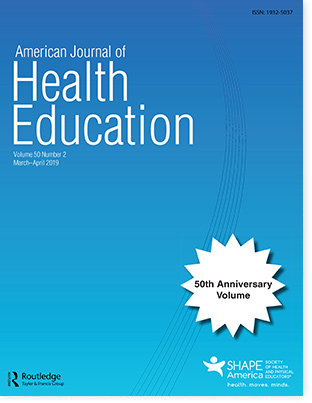 AJHE Table of Contents
AJHE Table of Contents
Motivational Readiness to Change Exercise Behaviors
Carrie McFadden & Qing Li

Parallel to the declining exercise levels in both university students and the adult population, there has been a recent and swift advent of wearable exercise tracking technologies, such as the later-generation smartphones, fitness applications (apps), and body-worn dedicated tracking devices; for example, Fitbit. An assumption of such tracking device use is that users will likely exercise more frequently, more intensely, or longer while using the devices. Yet, there is little evidence to suggest the effectiveness of wearable technology at promoting exercise. Even less is known about device use among university students and the impact that this technology may have on student exercise frequency, intensity, or time (FIT) behaviors. A study performed by the National College Health Assessment found that less than half of college students reported exercising at the recommended FIT levels set forth by the American College of Sports Medicine (ACSM).
In 2017, nearly 17% of teens were obese and 40% of adults were obese. Obesity rates often increase when young adults leave home and enter university settings. During the past 2 decades, a significant increase in obesity and obesity related chronic diseases—for example, type 2 diabetes, hypertension, and dyslipidemia—has occurred among teens and young adults. Reasons for student weight gain include changes in diet and eating patterns and decreased physical activity. Consistently, Health Educators understand that regular physical exercise, as students move through the aging process, is one of the most effective ways to offset obesity, lower body mass index (BMI), and decrease risk of chronic disease. Recommendations for regular exercise are stated in terms of exercise frequency, intensity, and time (FIT values).
The ACSM, the Centers for Disease Control and Prevention, and the American Heart Association recommend FIT in 2 categories: one for moderate intensity and one for vigorous intensity. Moderate exercise is defined as activities that are not exhausting, such as fast walking, baseball, tennis, easy biking or swimming, and badminton. Vigorous exercise is defined as activities where the heart beat becomes rapid, such as running, jogging, hockey, football, soccer, vigorous biking or swimming, or cross-country skiing. Current recommendations for each FIT value are a frequency of 5 days per week at the intensity of moderate aerobic activity for a time of at least 30 minutes per session. The second recommendation is frequency of 3 days per week at the intensity of vigorous activity for a time of at least 20 minutes per session in order to achieve optimal health and weight management.
To read the rest of this article, click here to download a pdf.